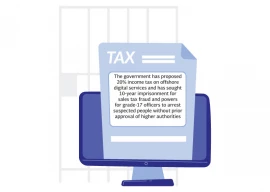
Rapid urbanisation is now a global phenomenon, raising the need for financing core services in urban centres.
For more than 200 years, state and local governments and government entities have relied on municipal bonds to finance long-term infrastructure investments. These have been used to finance the construction of public power utilities, railways, bridges and hospitals.
Municipal bonds are debt securities issued by state and local governments. The US is one of the biggest municipal debt markets.
A report released in 2012 by the US Securities and Exchange Commission estimates that there are $3.7 trillion in outstanding municipal bonds with nearly $400 billion in issuances each year.
The US municipal bond market has served as a template for countries to develop such markets tailoured to their own institutional environment. Effective functioning of the municipal bond market is crucial for the provision of public services in many cities around the globe. Can floating municipal bonds on the Pakistan Stock Exchange offer a solution to the funds needed to finance core public goods provision in our cities? What lessons can history teach us?
Brief history of bond market
The first recorded general-obligation municipal bond was issued in 1812 by the New York City to finance a canal. Only a few years later, the popularity of the instrument grew rapidly and 42 separate bond issues were made to help fund the successful Erie Canal project in America.
Besides building canals, municipal bonds were also used to finance other large-scale infrastructure projects such as railways. In 1913, legislation was passed to exclude the municipal bond income from taxation, which made the instrument even more attractive.
Pros and cons of bonds
Advantages of using municipal bonds to finance urban infrastructure are increasingly being evident to policymakers in emerging economies, some of whom are making efforts to accelerate the development of municipal bond market in their economies.
The role of municipal bonds has been instrumental in financing various development projects in China. A case in point is that of financing infrastructure.
A recent paper by Zhen et al (2020) examines the Urban Construction Investment Bond (UCIB) as a tradeable product in the financial market and a financial tool for the local government in China.
The paper shows that the government uses this financial tool to bridge the emerging capital market and infrastructure finance gap and the Chinese market uses UCIB as an emerging asset class.
The development of UCIB has hastened the pace of financialisation in China. However, such instruments work best where financial markets are deep and relatively well developed.
Shallow markets or the complete absence of long-term corporate or treasury debt means that benchmark yield curves are not available for pricing long-term municipal bonds.
Since investment intermediaries are usually not familiar to judge the credit quality of municipal issuers, investor confidence in long-term municipal issues tends to be low. This increases the risk of default on new issues and the risk of spillover to bond markets remains high.
Conclusion
A 2017 McKinsey report titled “Deepening Capital Market in Emerging Economies” created the Asian Capital Markets Development Index, judging countries on the basis of funding at scale, investment opportunities and pricing efficiency.
By all three standards, Pakistan remains a shallow market. Emerging markets like Pakistan are crowded out by governments, lack of diversification options and face a more volatile and higher cost of capital relative to developed markets.
Policymakers in many emerging economies understand what needs to be done to deepen capital markets, but carrying out those measures is challenging.
Policymakers need to focus on building the foundations for long-term capital growth. This not only involves policymaking but also creating a conducive economic environment consisted of a robust regulatory framework, legal structure and market infrastructure for capital market deepening.
THE WRITER IS A DOCTORAL CANDIDATE AT THE BARTLETT, UCL
Published in The Express Tribune, January 18th, 2021.
Like Business on Facebook, follow @TribuneBiz on Twitter to stay informed and join in the conversation.
COMMENTS (1)
Comments are moderated and generally will be posted if they are on-topic and not abusive.
For more information, please see our Comments FAQ


1737406890-0/Elon-Musk-(4)1737406890-0-165x106.webp)
1736322694-0/Untitled-design-(15)1736322694-0-165x106.webp)




















Municipal bonds are important to finance infrastructure but require robust systems of local taxation to be successful. Also greater transparency on the sources and uses of funds to avoid building up liabilities in an unsustainable manner.